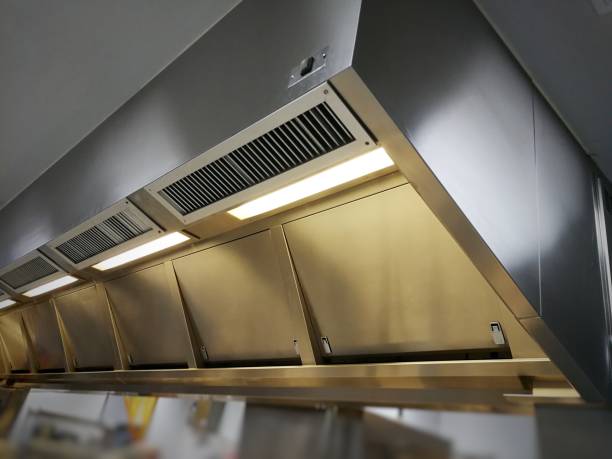Restaurant HVAC: Your Complete Guide to Perfect Climate Control
Creating the ideal dining experience goes far beyond exceptional food and service—it requires a restaurant HVAC system that maintains perfect comfort for both guests and staff. A well-designed restaurant HVAC system ensures optimal indoor air quality, temperature control, and ventilation throughout your establishment. From managing kitchen heat to maintaining comfortable dining room temperatures, your HVAC system plays a critical role in customer satisfaction and operational efficiency.
In this comprehensive guide, we’ll explore everything you need to know about restaurant HVAC systems, including energy-efficient solutions, maintenance requirements, and how proper ventilation creates a safe environment for everyone.
Understanding Restaurant HVAC System Fundamentals
Every successful restaurant relies on specialized climate control that addresses unique operational challenges. Your HVAC system must work harder than standard commercial installations to maintain comfort across vastly different environments.
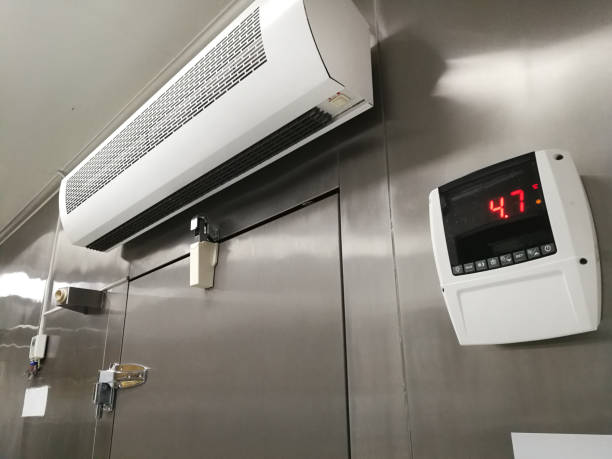
A restaurant HVAC system differs significantly from standard commercial HVAC installations due to the unique challenges restaurants face. Understanding HVAC basics is essential before diving into restaurant-specific requirements.
These systems must handle extreme temperature variations between the kitchen and dining areas while maintaining excellent air quality throughout the space. The complexity of restaurant operations requires HVAC solutions that can efficiently manage heat from cooking equipment, control humidity levels, and ensure proper ventilation for both comfort and safety.
Restaurant HVAC systems typically integrate multiple components, including air conditioning units, exhaust hoods, makeup air systems, and specialized air filtration equipment. The HVAC compressor serves as the heart of the cooling system, working continuously to maintain comfortable temperatures even during peak cooking hours.
Each component plays a vital role in creating a comfortable environment while managing the intense heat and airborne contaminants generated during food preparation. A properly designed system ensures that hot kitchen air doesn’t infiltrate dining areas, maintaining distinct climate zones throughout your establishment.
The importance of indoor air quality in restaurants cannot be overstated. Poor air quality affects both customer comfort and staff productivity, potentially impacting your restaurant’s reputation and bottom line. Professional HVAC systems designed specifically for restaurants address these challenges through strategic air circulation patterns, advanced filtration systems, and precise temperature controls that work together to create an optimal dining environment.
Essential Components of Modern Restaurant HVAC Systems
Understanding the core elements of restaurant climate control helps you make informed decisions about system design and upgrades. Each component serves a specific purpose in maintaining comfort and air quality throughout your establishment.
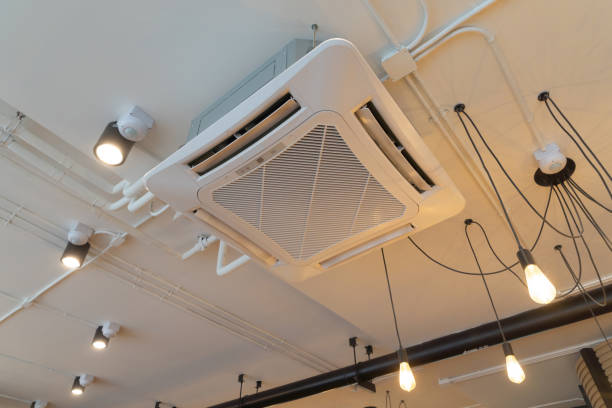
Key HVAC Components for Restaurant Success
Modern restaurant HVAC systems require several critical components working in harmony to maintain optimal conditions:
• Air conditioning units – Professional-grade air units designed for restaurant applications with enhanced capacity to handle demanding environments and varying occupancy levels throughout the day
• Makeup air systems – Essential for replacing air exhausted through kitchen hoods, preventing negative air pressure that causes uncomfortable drafts and compromises system effectiveness
• Air filtration equipment – Advanced filtration systems that capture grease particles, cooking smoke, and airborne contaminants before they circulate throughout the establishment. Regular HVAC filter replacement is essential for maintaining optimal air quality and system efficiency
• Fresh air ventilation – Balanced fresh air introduction that meets building codes while maintaining energy efficiency through heat recovery capabilities
• Temperature control zones – Separate climate zones for kitchen and dining areas, ensuring cooking heat doesn’t compromise guest comfort in dining rooms
The dining room requires consistent temperature control to ensure guest comfort, while kitchen areas need powerful cooling systems to counteract heat from cooking equipment. Energy-efficient HVAC solutions help reduce operational costs while maintaining optimal comfort levels. Many restaurant owners find that investing in high-quality air conditioning systems pays dividends through reduced energy costs and improved customer satisfaction.
Kitchen Ventilation and Exhaust Hood Integration
Proper kitchen ventilation protects both your staff and your guests while ensuring compliance with safety regulations. The exhaust system forms the backbone of your restaurant’s air quality management strategy.
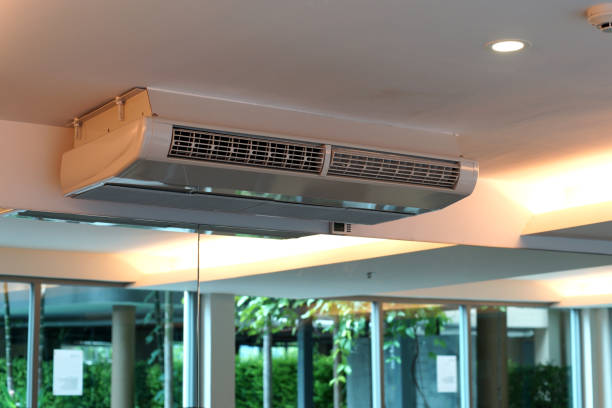
Commercial Kitchen Hood Systems
Kitchen hoods represent one of the most critical components of restaurant ventilation systems, directly impacting both air quality and fire safety. Commercial exhaust hoods capture heat, smoke, grease, and cooking odors at their source, preventing these contaminants from spreading throughout the restaurant. Proper hood design and sizing ensure effective capture of all cooking effluent while minimizing air conditioning load.
Exhaust hoods work in conjunction with hood fans and exhaust fans to create powerful ventilation systems that maintain safe working conditions in commercial kitchens. The American Society of Heating, Refrigerating, and Air-Conditioning Engineers (ASHRAE) provides industry standards for commercial kitchen ventilation that ensure proper system design.
The integration between hood systems and the overall restaurant HVAC system requires careful engineering to ensure balanced air pressure and optimal performance. Professional installation and regular maintenance of kitchen hoods are essential for both safety and efficiency.
Balancing Kitchen and Dining Room Air Systems
Creating comfortable environments in both the kitchen and dining areas requires sophisticated HVAC design that addresses the unique needs of each space. Kitchen ventilation systems must remove hot, contaminated air while preventing migration into dining areas. Meanwhile, dining room HVAC systems focus on maintaining comfortable temperatures and pleasant air quality for guests.
| Zone | Temperature Range | Air Pressure | Primary Concerns |
|---|---|---|---|
| Kitchen | 68-75°F | Negative pressure | Heat removal, grease capture, safety |
| Dining Room | 70-76°F | Positive pressure | Guest comfort, air quality, noise control |
| Prep Areas | 65-70°F | Neutral pressure | Food safety, staff comfort, humidity control |
The key to successful restaurant HVAC design lies in creating proper air pressure relationships between different zones. Positive pressure in dining areas and controlled negative pressure in kitchens prevent cross-contamination of air between spaces. This balanced approach ensures that cooking odors and kitchen heat don’t compromise the dining experience.
Energy Efficiency and Cost Management Strategies
Rising utility expenses make energy efficiency a top priority for restaurant operators seeking to protect profit margins. Modern HVAC technology offers substantial savings opportunities without compromising performance.
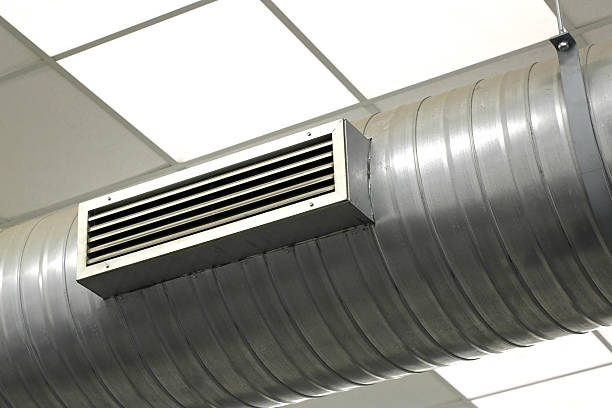
Smart Energy Solutions for Restaurant HVAC
Restaurant operators face significant energy costs, making energy efficiency a critical consideration when selecting HVAC equipment. Modern restaurant HVAC systems incorporate advanced technologies that reduce consumption while maintaining optimal comfort:
• Variable speed equipment – Adjusts capacity based on demand, reducing energy waste during low-activity periods while ensuring adequate performance during peak times
• Demand-controlled ventilation – Automatically adjusts air circulation based on occupancy levels and cooking activity, eliminating unnecessary energy consumption
• Heat recovery systems – Capture waste heat from exhaust air to pre-condition incoming makeup air, significantly reducing heating and cooling loads
• Smart thermostats and controls – Provide precise temperature control and scheduling capabilities that optimize system operation throughout the day
• High-efficiency components – Energy-efficient HVAC equipment that meets or exceeds industry efficiency standards, reducing long-term operational costs. ENERGY STAR-certified commercial kitchen equipment can further enhance overall energy performance in restaurant environments
Professional Commercial HVAC service providers understand the unique requirements of restaurant applications and can design systems that deliver optimal performance while minimizing long-term operational costs. Regular AC maintenance ensures continued efficiency and prevents costly emergency repairs that can disrupt business operations. Well-designed systems experience fewer breakdowns, require less frequent repairs, and maintain consistent performance throughout their operational life.
Indoor Air Quality and Health Considerations
Maintaining exceptional air quality protects the health of your staff while ensuring a pleasant dining experience for guests. Poor air management can lead to regulatory violations and customer complaints that damage your reputation.
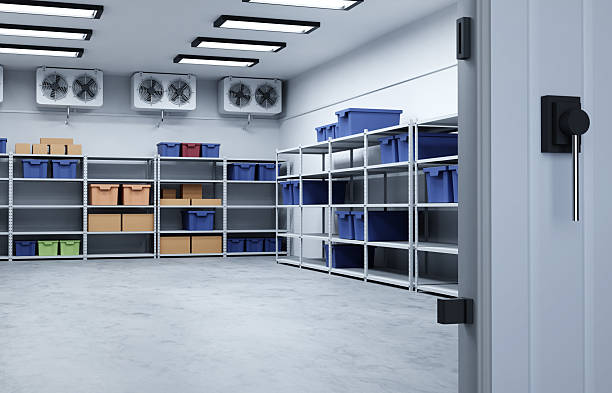
Managing Airborne Contaminants in Restaurant Environments
Restaurant environments generate numerous airborne contaminants, including cooking smoke, grease particles, and food odors, that can compromise air quality if not properly managed. Advanced air filtration systems capture these contaminants before they circulate throughout the space, protecting both staff health and customer comfort. High-efficiency filters combined with proper ventilation create clean air throughout the establishment.
The importance of clean air in restaurants extends beyond comfort to encompass health and safety regulations. According to the Environmental Protection Agency’s guidelines on indoor air quality, poor air quality can lead to employee health issues, customer complaints, and regulatory violations. Professional restaurant HVAC systems incorporate multiple stages of filtration and air cleaning to ensure consistently high air quality standards.
A properly functioning restaurant HVAC system creates a safe environment by managing temperature extremes, controlling humidity levels, and removing harmful contaminants from the air. Kitchen staff benefit from effective heat removal and improved air quality, while dining room guests enjoy comfortable temperatures and fresh air circulation. These controlled conditions contribute to overall satisfaction and safety for everyone in the restaurant.
Professional Installation and Maintenance Requirements
Expert installation and ongoing maintenance determine whether your HVAC investment delivers long-term value or becomes a constant source of problems. Professional service ensures optimal performance and regulatory compliance.
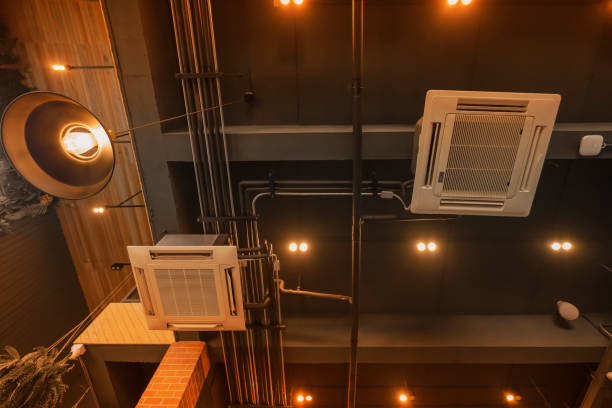
Choosing the Right HVAC Equipment for Your Restaurant
Selecting appropriate HVAC equipment for restaurant applications requires expertise in both HVAC technology and restaurant operations. Factors such as kitchen size, cooking methods, seating capacity, and building layout all influence system design and equipment selection.
Understanding the cost to install an HVAC system with ductwork helps restaurant owners budget appropriately for new installations or major upgrades. Professional HVAC contractors specializing in restaurant applications understand these complex requirements and can recommend optimal solutions.
The complexity of restaurant HVAC systems makes professional design and installation essential for optimal performance. For those considering a complete system upgrade, reviewing the new HVAC system cost provides valuable insights into investment requirements.
Improper sizing or installation can result in inadequate climate control, excessive energy costs, and frequent equipment failures. Working with Callidus Air ensures that your restaurant’s HVAC system meets all performance requirements while complying with local building codes and regulations.
Ongoing Maintenance and System Optimization
Regular maintenance of restaurant HVAC systems is crucial for maintaining performance, preventing breakdowns, and ensuring compliance with health and safety regulations. Kitchen hood cleaning, filter replacement, and equipment inspection must be performed on scheduled intervals to maintain optimal operation.
Learning how to clean HVAC system components properly ensures longevity and efficiency. Additionally, consulting an HVAC filters guide helps you select the right filtration for your restaurant’s specific needs.
Professional Heating Maintenance services provide comprehensive care for all HVAC components. Preventive maintenance programs help restaurant owners avoid costly emergency repairs and equipment replacements.
Experienced HVAC technicians can identify potential issues before they cause system failures, providing peace of mind and ensuring uninterrupted operation. Regular maintenance also helps maintain energy efficiency, keeping operational costs under control.
Technology Advances in Restaurant HVAC Solutions
Innovative control systems and emerging technologies are transforming how restaurants manage climate control. Smart HVAC solutions offer unprecedented efficiency and reliability for modern restaurant operations.
Smart Controls and Future Innovations
Modern restaurant HVAC systems incorporate advanced control technologies that optimize performance while reducing energy consumption. Smart thermostats, occupancy sensors, and automated scheduling systems work together to provide precise climate control throughout the restaurant.
These systems automatically adjust temperature and ventilation based on occupancy levels, cooking activity, and time of day. Integration with building management systems allows restaurant operators to monitor and control HVAC performance remotely, receiving alerts about maintenance needs or system issues.
The restaurant industry continues to embrace new technologies that improve HVAC performance while reducing environmental impact. Heat recovery systems, solar-assisted cooling, and advanced air purification technologies are becoming increasingly common in restaurant applications. These innovations help restaurants meet sustainability goals while maintaining optimal comfort for guests and staff.
Callidus Air stays at the forefront of HVAC technology developments, helping restaurant owners implement cutting-edge solutions that provide competitive advantages.
In Summary
Implementing an effective restaurant HVAC system requires careful planning, professional expertise, and ongoing maintenance to ensure optimal performance. The right HVAC solution creates comfortable dining environments, maintains kitchen safety, and controls operational costs while providing the reliability that restaurant operations demand. From air conditioning and ventilation to energy efficiency and air quality management, every aspect of your restaurant’s HVAC system contributes to your business success.
Ready to upgrade your restaurant’s climate control system or need expert maintenance for your existing equipment? Contact us today to discuss your restaurant HVAC needs with our experienced team of professionals. Our comprehensive restaurant HVAC solutions will help you create the perfect environment for both guests and staff while optimizing energy efficiency and operational costs.
Frequently Asked Questions
Restaurant owners often have similar questions about HVAC system management and requirements. Here are answers to the most common questions about restaurant HVAC systems to help you make informed decisions.
How often should restaurant HVAC systems be serviced?
Restaurant HVAC systems require monthly inspections and quarterly professional maintenance due to the demanding environment. Kitchen hood cleaning should occur more frequently based on usage volume and local regulations.
What’s the typical lifespan of a restaurant HVAC system?
Well-maintained restaurant HVAC equipment typically lasts 10-15 years, though kitchen ventilation components may need replacement sooner due to grease exposure and heavy usage patterns.
How much can energy-efficient HVAC systems reduce restaurant operating costs?
Modern energy-efficient restaurant HVAC systems can reduce energy costs by 20-40% compared to older equipment, with payback periods typically ranging from 3-7 years depending on usage patterns.
What are the most common restaurant HVAC problems?
Common issues include inadequate kitchen ventilation, imbalanced air pressure between dining and kitchen areas, dirty filters causing reduced efficiency, and undersized systems unable to handle peak loads.
Do restaurants need special permits for HVAC installations?
Yes, restaurant HVAC installations typically require building permits, and kitchen ventilation systems must comply with fire safety codes and health department regulations specific to food service establishments.

